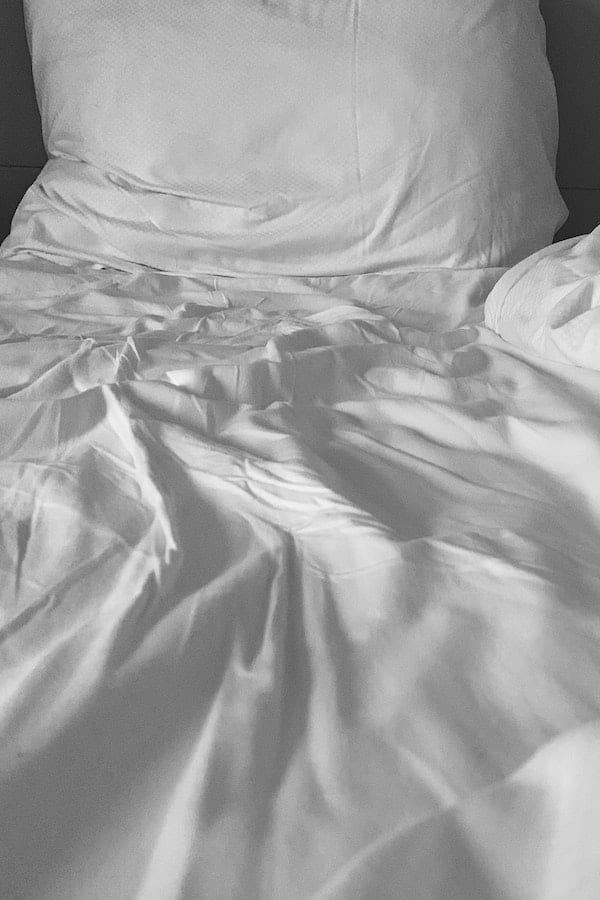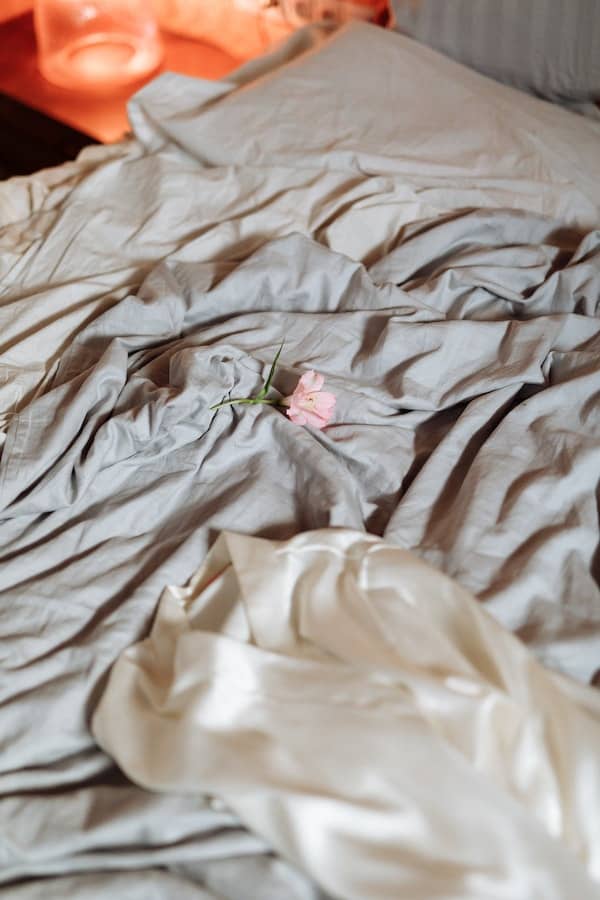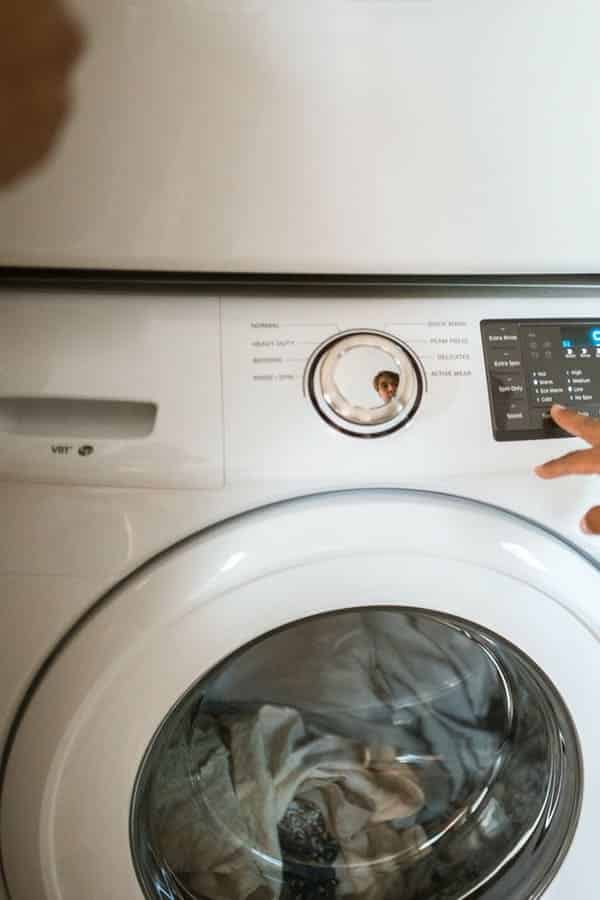Satin pillowcases make for a luxurious night’s sleep and are a popular alternative to silk. Satin is a type of weave often recommended by hair stylists to help maintain healthy hair.
The lack of friction and lower absorbency of satin helps prevent hair frizz. Satin is also great for the skin due to its cooling nature and hypoallergenic qualities.
There are many reasons to opt for satin pillowcases over standard. However, they do need a little extra care when washing.
To keep your satin pillowcases in the best condition, it’s important to know how to wash and care for them. Overwashing or applying too much heat can damage satin and reduce its longevity.
Luckily, it’s easy to safely care for your satin pillowcases with cool water and a mild laundry detergent. Fabric softener is too harsh to use on satin but can be replaced with white vinegar. If you’re machine washing, you can use a laundry mesh bag to protect your pillowcases.
To remove wrinkles after drying your satin pillowcase, you can use a hand-held steamer or iron. Remember to place a towel between the pillowcase and the iron if using this method.
- What are the benefits of satin pillowcases?
- Check the label
- How often should you wash satin pillowcases?
- What is the best detergent for satin pillowcases?
- How to wash satin pillowcases by hand
- How to machine wash satin pillowcases
- How should you dry satin pillowcases?
- How to remove wrinkles from satin pillowcases?
There may be affiliate links in this article. You can read more about this in my disclosure.
What are the benefits of satin pillowcases?

Satin is a type of weave, traditionally made from silk. Nowadays, satin is usually made from a blend of synthetic fibres.
Common synthetic fibres used in satin weaves include polyester and cotton. Pillowcases made with a satin weave have many benefits for maintaining healthy hair.
Satin creates less friction than other materials, helping to prevent hair frizz. It also dries your hair out less than standard pillows due to its low absorbency.
Satin tends to be more flexible, moving with your hair rather than against it. This is great for stopping hair from becoming tangled and reduces breakage.
Other benefits include the hypoallergenic nature of satin and its breathability. These qualities are often touted to help maintain healthy skin.
Best of all, satin stays cool throughout the night for a luxurious night’s rest.
Check the label
Satin pillowcases are usually woven with a blend of synthetic fibres. Common fibres used include polyester, cotton and acetate.
Some fabrics, such as silk and acetate, are usually dry clean only. It’s important to check the label on your pillowcase before washing it at home.
If the label says dry clean only, you should follow these instructions.
The label may recommend hand washing over using a machine. Luckily, we have guides for both methods below!

How often should you wash satin pillowcases?
Dead skin cells, oils and general dirt accumulate on your bed linen whilst you sleep. This buildup can irritate your skin, leading to breakouts.
Whilst you should wash bed linen regularly, overwashing can harm satin fabrics. To best maintain your bed linen and protect your skin, it’s best to wash bed linen every seven to ten days.
What is the best detergent for satin pillowcases?
Always use a mild detergent when caring for satin. Harsh cleaners, like stain removers, fabric softeners or bleach, can damage delicate fabrics.
You may wish to opt for a mild detergent designed for delicates, such as Ecover’s Delicate Laundry Liquid. You can use most liquid detergents when hand washing or machine washing.
Usually, it’s better to use liquid detergent rather than powder on satin items. Powder detergent is harder to dissolve in cooler water, and satin needs a cool wash.
Applying too much heat to satin can damage and weaken its fibres.
[amazon box=”B00N86644O” template=”vertical”]How to wash satin pillowcases by hand
When checking the label, you may find that the manufacturer advises hand washing only. To handwash, you’ll need a sink or bowl, cool water and a mild laundry detergent.
- Put on a pair of gloves to protect your hands
- Fill a clean sink with cool water, avoid using hot water as this can damage satin
- Add a small amount of mild detergent and stir to mix
- Turn your pillowcase inside out and submerge it in the cool water
- Stir the water gently to clean the pillowcase, avoid rubbing or scrubbing the fabric
- Leave your pillowcase to soak for up to 30 minutes
- Rinse the pillowcase with cool water, making sure to get rid of any detergent residue
- Gently press out water from the pillowcase using the side of the sink or bowl, do not squeeze or twist the fabric
- Hang the pillowcase to dry away from direct sunlight

How to machine wash satin pillowcases
When machine washing satin pillowcases it’s a good idea to use a mesh laundry bag. Satin is a delicate material that can snag if placed in a wash with other items.
By placing the item in a mesh bag, you can protect it from snags. You can find laundry mesh bags in a variety of sizes on Amazon.
Make sure to wash your satin pillowcases with similar colours to avoid discolouration. It’s best to separate heavily soiled items from the wash as you’ll be using the coldest wash setting.
To machine wash satin pillowcases, you’ll need a mesh laundry bag and mild laundry detergent. You can also use white vinegar as a fabric softener if desired.
- Place the satin pillowcase in a mesh laundry bag
- Add the mesh laundry bag to the washing machine with the rest of your items
- Select the coolest water setting and a delicate cycle
- Add laundry detergent, for best results use a detergent formulated for delicate fabrics
- Instead of fabric softener, you can add half a cup of white vinegar to the fabric softener drawer
- Turn on the cycle
- Once the cycle has finished, remove the items quickly to avoid wrinkles
- Hang your satin pillowcase to dry on a washing line or clothes horse
When drying, avoid placing the pillowcase in direct sunlight. The heat can damage satin fibres, whilst the intensity of the sunlight can fade the colour.
Instead hang the pillowcase to air-dry in a shaded place. If your satin pillowcase has wrinkles after washing, you may wish to take extra steps to remove them.
You can use either a hand-held steamer or an iron for this. If using an iron, make sure to place a towel on top of the pillowcase to protect it.
How should you dry satin pillowcases?
As heat can damage satin, it’s best to air dry satin pillowcases. You can hang to dry outdoors or indoors but make sure to avoid direct sunlight.
If you would prefer to tumble dry, first check the label to see if it’s recommended. Satin weaved with silk or acetate shouldn’t be placed in the tumble dryer as the material is too delicate.
When using a tumble dryer to dry satin, always select the lowest heat setting and a short, delicate cycle. Using a higher heat setting will damage the fibres and risk shrinking the satin.
You should be able to keep the pillowcase in the laundry mesh bag if you have used one. Most laundry mesh bags are safe to go in the tumble dryer.
To best protect your pillowcase, remove it whilst it is still damp. Then hang to finish air-drying.
This helps to avoid applying too much heat to the satin material.

How to remove wrinkles from satin pillowcases?
The safest way to remove wrinkles from satin pillowcases is with a hand-held steamer. Steamers heat up water into steam which can then be applied to the fabric through the spout of the steamer.
To use a steamer, first fill it up with fresh, clean water. Heat up the steamer and hang up the satin pillowcase.
Once the steamer is ready, position it closely in front of the fabric. Work in sections from the top to the bottom of the pillowcase until it is wrinkle-free.
Make sure to avoid putting your hand behind the fabric to steady it, as the steamer will burn your hands. Don’t steam the pillowcase for too long in one position as the heat can harm the fabric.
Alternatively, you can use an iron to remove the wrinkles. Do not use an iron if the fabric is weaved with silk or acetate as these fabrics are too delicate.
To protect the satin fabric, place a clean, dry towel on top of the pillowcase before ironing. The towel will act as a barrier between the iron and the satin fabric.
Make sure to use the lowest heat setting and don’t let the iron rest in one place for more than five seconds.
[amazon box=”B07HF3X6Y4″ template=”vertical”]


